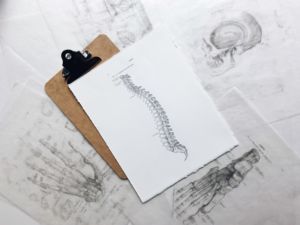
Have you had facet joint injections but didn’t get the relief you expected? Here’s why they might not be working for you and what you should do next:
Two Reasons for Failed Facet Joint Injections:
1. The Wrong Joint was Treated
Facet joint injections are a mixture of fast-acting pain medication and slow-release cortisol. When a patient has been correctly diagnosed, and the right area is being treated, facet joint injections have a 75% success rate.
It can sometimes be challenging to locate precisely which facet joint is causing the pain because the pain is often deferred to other areas. Doctors will use facet joint injections as a diagnostic method to find which joint is causing pain. If a patient experiences no pain relief from a first-time facet joint injection, doctors usually take that as a sign that the joint they treated is not the joint causing the pain.
After this, other diagnostic methods should be used to explore the cause of pain further and pinpoint the location of the joint responsible. If the correct joint is found, a facet injection will often work.

2. Incorrect Diagnosis
Osteoarthritis is the most common reason why facet joint injections are given. Facet joints are complicated structures that sit near nerves, ligaments, and other tissues that can become damaged and cause pain. Sometimes pain in the facet joint area is actually being caused by damage to these surrounding structures and not the deterioration of the joint itself. In this case, other treatments will work better than a facet joint injection.
If nerves near the facet joints in your lower back are causing your pain, you may be diagnosed with lumbar facet syndrome. This is a common condition that can be treated with chiropractic care and spinal decompression therapy. Other common diagnoses that can be confused with facet pain are spinal stenosis and herniated disc. The correct diagnosis is the first step to figuring out the appropriate treatment.
Four Other Treatments to Try:
1. Chiropractic Adjustment
Chiropractic adjustments are often recommended for facet joint pain if injections don’t provide enough relief or if they stop working overtime. Chiropractors can gently adjust the spine to fix any subluxations (misalignments) of the vertebrae. As a part of this treatment, many chiropractors will recommend posture adjustment to help mitigate wear and tear on the facet joints.
Posture adjustment consists of exercises that help to strengthen core muscles and stretch tight muscles and ligaments. An incorrect posture like hunching forward towards your computer screen can strain these joints and cause damage over time. Correcting the posture helps to relieve this strain. Patients often notice that their pain decreases with posture correction, especially when it is used alongside other treatments. Fixing your posture can also help prevent further damage and future pain.
2. Spinal Decompression Therapy
In some instances, especially when the nerve roots in your spine are causing pain, spinal decompression therapy can provide considerable relief. This therapy is non-invasive and more effective than traditional traction. It utilizes a computerized table that gently stretches the spine, creating negative pressure between your vertebrae. This relieves the pressure on nerves, corrects bulging discs, and increases the circulation of fluids that relieve inflammation and promote healing.
Spinal decompression has a high success rate in relieving facet joint-related pain. Most patients experience some pain relief after the first session and lasting pain relief after completing their recommended course of treatments. Spinal decompression therapy can help heal the cause of the problem, rather than just covering up the symptoms.
3. Epidural Injections
Epidural injections may be appropriate if you are experiencing radiating nerve pain that goes down into your thigh or buttocks. Facet joint injections and epidural injections differ in many ways. Facet joint injections are meant to treat back or neck pain that is caused by arthritis in the facet joints. Epidural injections focus more on relieving nerve pain that is not localized to the back or neck. Facet injections are administered to the affected joint, whereas epidural injections are administered to the space between the spinal vertebrae and the membrane that covers them. When it is injected next to an inflamed area that is pinching nerve tissue, it will relieve the inflammation and the pressure on the nerve.
This type of inflammation and nerve pain is often caused by spinal stenosis or by a herniated disc. Both of these conditions can also be treated with spinal decompression therapy. Epidural injections are usually considered if other treatments don’t work or aren’t an option for some reason.
Epidural injections can provide lasting pain relief for some people, but like facet joint injections, they must be re-administered to keep working. Because both of these injections contain corticosteroids, there is a limit to how many injections a patient can safely receive. This is why other treatments are recommended before epidural injections are considered.
4. Lifestyle Changes
In addition to recommending medical treatment for your pain, your health care provider might also recommend lifestyle changes. Certain types of exercises, called low impact exercises, can help improve joint pain and decrease inflammation. These include swimming, bicycling, cross country skiing, and rowing. Practicing one of these activities several times a week has been proven to greatly reduce arthritis pain and increase range of motion. These sorts of exercises can also be helpful for nerve-related pain.
A diet rich in anti-inflammatory foods like dark leafy greens, red and purple fruits and vegetables, and omega 3s, can also reduce arthritis pain. Omega 3s, in particular, are helpful. You can get these by increasing your intake of fish, flaxseed, and other dietary sources or by taking a quality fish oil supplement. Reducing foods that promote inflammation, like sugar, white flour, and chemical additives, is also important.
Your Treatment Plan
As you’ve seen in this article, your back pain may be caused by arthritis in a facet joint or by another condition that has similar symptoms. If facet joint injections haven’t provided any or enough relief, there are other options. Our Houston chiropractors can help pinpoint a diagnosis and put together a personalized treatment plan. This may include more than one treatment, such as posture rehab and spinal decompression therapy, combined with lifestyle changes you can make at home.







